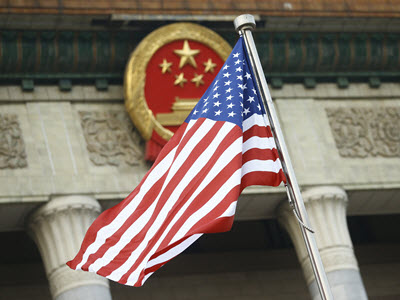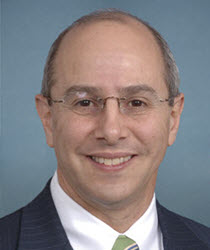The United States’ Choices amid China’s Rise
The U.S. Congress granted China permanent normal trade relations in 2000, and the following year China entered the World Trade Organization (WTO). At the time, many hoped that its integration into the liberal international order would promote greater reliance on market mechanisms and the rule of law. However, over the last two decades, China has become much more powerful by exploiting the open global system of trade.
Simone McGuinness interviewed Charles W. Boustany Jr. about China’s growing economic influence following its accession to the WTO. He discusses Beijing’s approach to economic policy, the United States’ posture toward China, and possibilities for the U.S.-China relationship going forward.
What is the fundamental challenge posed by China’s economic rise?
China has emerged as a major power and strategic competitor that is now deeply integrated into the international political economy since its accession to the WTO. In contrast to the Soviet Union, the Chinese Communist Party (CCP) leadership after Mao made adaptations by adhering to a hybrid system of mercantilist-Leninism. This approach enabled China to rapidly amass wealth, technology, and power within the liberal economic order by exploiting its open nature while shielding the country from what it perceived to be the harmful effects of economic and political liberalization that led to the demise of the Soviet Union.
Great-power competition between the United States and China is now underway. The balance of power is being driven primarily by economic and technological factors in a system characterized by economic and technological interdependence, but now facing declining consensus on standards and rules among democratic market economies. Other countries are caught between the United States and China, with many relying on the United States for security while remaining heavily dependent on China for trade and investment. Many of these countries do not want to be put into a position of having to make this choice.
The fundamental challenge for the United States is to devise a strategy under these conditions for shaping a favorable balance of power in the economic and technology domains without undermining the liberal economic order that is tied to the legitimacy of American leadership.
How did we arrive at the current status of U.S.-China relations?
The U.S. strategy of open economic engagement with China was premised on optimism that it would drive structural economic reforms as China adopted rules and norms as conditions of WTO accession. This approach failed to account for the fact that CCP leaders from Deng Xiaoping to Xi Jinping would allow economic reforms only if they were perceived to be in the CCP’s interest. CCP leaders consistently viewed the purpose of economic activity as a means of enhancing the legitimacy of one-party rule and the CCP’s control over all Chinese actors. Full economic liberalization was seen as incompatible with these goals.
The premise supporting open economic engagement has now collided with Chinese resistance to reform. China’s emergence as a strategic competitor has provoked deep concerns that began during the George W. Bush administration, escalated during the second term of the Obama administration, and culminated in the Trump administration’s decision to change course. The problem is that the Trump administration’s approach has been reactive rather than strategic. It has relied on unilateral tactical, punitive measures without clear objectives, while indiscriminately applying tariffs to other major market economies. The result has been unilateral escalatory decoupling—a high-risk approach to strategic circumstances that require shaping a favorable balance of power with allies in the economic and technology domains.
How has China’s behavior changed since its accession to the WTO? How have countries responded?
China’s reform efforts slowed after the country’s accession to the WTO in 2001. The United States brought 23 cases to the WTO for dispute resolution from 2004 to 2018. Yet, despite favorable rulings in nearly all the resolved cases, China has continued market-distorting subsidies, intellectual property (IP) theft, and unfair tax and regulatory treatment of foreign competitors in the Chinese market.
Under Xi Jinping, reform efforts have arguably reversed even further, as China has taken a more assertive statist stance. China’s integration into global value chains, telecommunication systems, and the international financial system exposed the vulnerability of market-based democracies to its exploitative practices and paved the way for the use of so-called sharp power in dealing with other countries. The Belt and Road Initiative and formation of new China-led institutions like the Asian Infrastructure Investment Bank are part of a broader Chinese strategy to create an alternative or parallel system based on Chinese standards. China has also taken a more aggressive approach to setting standards in various international institutions. In sum, it is behaving like a revisionist power and using all instruments of power in dealing with other countries to reshape the balance of power in the economic and technology domains in ways favorable to its interests.
How has China’s approach to economic policy affected the liberal economic order?
The liberal economic order has been under mounting strain since the 1970s due to the rise of nontariff barriers, newer forms of protectionism, and the rapid development of technology—all of which require consensus on rules, norms, and standards. The institutions providing the architecture for international trade, finance, and monetary affairs were designed for market economies and have proved to be ill-equipped to deal with non-market economies, such as China’s, with divergent approaches to economic policy. China’s integration into the international economy has further stressed this deeply integrated network that was already experiencing declining cooperation. As U.S. foreign economic policy has veered sharply toward nationalism in reaction to these developments, the liberal economic order risks devolving into one dominated by rising protectionism, discord, and heightened security risks.
How has the nature of the U.S.-China rivalry shifted over time?
U.S.-China relations have shifted significantly since China’s accession to the WTO. Relations between the two countries were managed through open, highly structured engagement, coupled with reliance on the WTO’s dispute-settlement process and Appellate Body to manage trade disputes. The U.S. economy remained open to China with expectations that China would implement structural reforms to open its own economy. Failure to achieve meaningful structural reforms and a bilateral investment treaty led to growing consensus in the United States that tougher measures were needed.
Competition between the two countries is not occurring in isolation. It is occurring in a highly networked international economy with other significant countries pursuing their own interests. Complex global value chains, telecommunications networks, and blurred lines between civil and military use of technology have set the stage for great-power competition, and U.S. strategy must not ignore the effects of economic policy on security. Shaping a favorable balance of power in the economic and technology domains is essential because these domains will fundamentally determine power distribution, and ultimately national security. The United States will have to shift from reactive unilateral escalatory decoupling to an integrated strategy with allies—partial disengagement—as Aaron Friedberg and I described in an NBR Special Report.
How has Congress’s stance toward China changed since you were in office?
When I entered Congress in 2005, most members favored engagement as a means to promote economic liberalization, while relying on the WTO dispute-settlement process for enforcement of the rules to hold China accountable to its WTO accession agreement. The Committee on Foreign Investment in the United States (CFIUS) was used for investment screening to address national security concerns. Within a few years, concerns grew regarding China’s IP theft, cybersecurity breaches, and failure to curtail subsidies and other market distortions and restrictions. Attitudes in Congress began to shift in 2013 and became decidedly negative in 2018, reflecting shifts in public opinion and the views of the business community that stronger measures were needed to address continued abuses. Although Congress now regards China as a strategic competitor, a consensus has not emerged on strategy and objectives beyond punitive measures, with the exception of the passage of legislation to strengthen the CFIUS process.
Can you assess the possible scenarios for the U.S.-China relationship going forward?
The so-called phase-one agreement with China offers a tenuous reprieve from further escalation of the tariff war but does nothing to address fundamental differences driving this great-power rivalry. In particular, it does not address important concerns over subsidies and the cybertheft of IP. Moreover, the targets set for purchase were not likely achievable prior to the Covid-19 pandemic and have fallen well short subsequently. Enforcement requires further tariff escalation, which will be limited by the negative political impact of economic damage caused to American farmers and manufacturers. The agreement is unstable and likely to be the high-water mark of what can be achieved using unilateral pressure. The United States is decoupling from China by unilateral executive action without effectively building a coalition of allies. This policy, if continued, will further fragment the liberal economic order and accelerate the balance-of-power dynamic already underway. Punitive tariffs risk alienating important allies and would put the United States at an economic disadvantage.
A better strategy would entail building aggregate leverage and taking steps to minimize vulnerabilities—both in coordination with allies—in order to strengthen the liberal economic order and shield it from abusive Chinese practices. The overarching purpose would be to work with allies to implement a strategy of partial disengagement using a robust liberal economic order as leverage while jointly setting rules for engagement with China. This strategy will require extensive diplomacy by the United States. However, it would put pressure on CCP leaders to either implement structural reforms or face less favorable terms for participation in global value chains and investment—in effect deepening China’s disengagement from the international economy.
How should the United States work with its allies and partners to address the challenge posed by China’s economic strategy?
The United States’ primary objective should be preserving or enhancing its relative power advantage by ensuring that the widest array of countries are committed to the liberal economic order based on shared interests, values, high standards, and enforceable rule of law in order to address China’s mercantilist policies. The United States should expand efforts to complete high-standard trade and investment agreements with the European Union and as many market economies as possible in Asia to link major production hubs and then expand to other market economies around the world. By setting high standards for participation in global value chains, investment, and technology, rule-abiding market economies would be maximizing aggregate leverage to test Beijing’s will and capacity for reform to meet these norms.
The United States should also use ongoing trade talks with Japan to negotiate entry into the Comprehensive and Progressive Agreement for Trans-Pacific Partnership. This would merge the North American production hub with key countries in Asia and attract other countries to join. While a number of impediments remain to a trade and investment agreement with the EU, the United States could start negotiations to achieve consensus on emerging and foundational technology while putting aside legacy disputes.
The United States, the EU, and Japan should take the lead in developing cooperative strategies for setting standards in multilateral, regional, and industry organizations. Washington should also work with allies to minimize vulnerabilities by sharing information to more effectively exclude bad actors seeking investment or participation in global value chains. Such an effort could be more formalized through the creation of a shared database or registry and lead to coordinated investment screening. In effect, the United States, along with countries committed to a rules-based liberal order, would conduct a strategy of partial disengagement to defend and expand that order. Private-sector commercial entities will likely align with this strategy, making it more sustainable and effective.
Charles W. Boustany Jr. is a Counselor at NBR. He retired from the U.S. Congress after serving from 2005 to 2017. Congressman Boustany is the co-author with Aaron L. Friedberg of the NBR Special Reports “Partial Disengagement: A New U.S. Strategy for Economic Competition with China” and “Answering China’s Economic Challenge: Preserving Power, Enhancing Prosperity.”
This interview was conducted by Simone McGuinness while a Project Associate at NBR.




